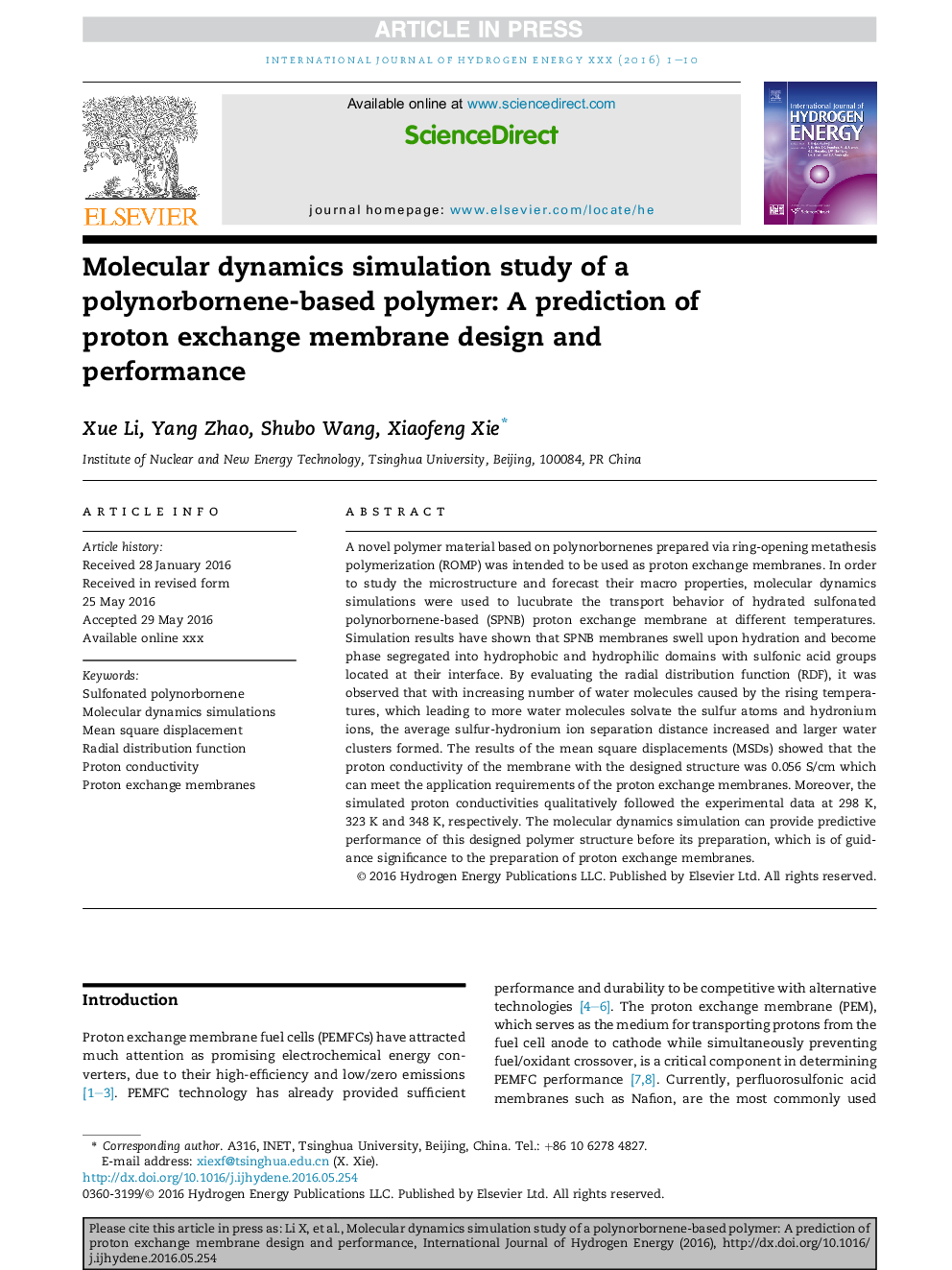| Article ID | Journal | Published Year | Pages | File Type |
|---|---|---|---|---|
| 5147900 | International Journal of Hydrogen Energy | 2016 | 10 Pages |
Abstract
A novel polymer material based on polynorbornenes prepared via ring-opening metathesis polymerization (ROMP) was intended to be used as proton exchange membranes. In order to study the microstructure and forecast their macro properties, molecular dynamics simulations were used to lucubrate the transport behavior of hydrated sulfonated polynorbornene-based (SPNB) proton exchange membrane at different temperatures. Simulation results have shown that SPNB membranes swell upon hydration and become phase segregated into hydrophobic and hydrophilic domains with sulfonic acid groups located at their interface. By evaluating the radial distribution function (RDF), it was observed that with increasing number of water molecules caused by the rising temperatures, which leading to more water molecules solvate the sulfur atoms and hydronium ions, the average sulfur-hydronium ion separation distance increased and larger water clusters formed. The results of the mean square displacements (MSDs) showed that the proton conductivity of the membrane with the designed structure was 0.056Â S/cm which can meet the application requirements of the proton exchange membranes. Moreover, the simulated proton conductivities qualitatively followed the experimental data at 298Â K, 323Â K and 348Â K, respectively. The molecular dynamics simulation can provide predictive performance of this designed polymer structure before its preparation, which is of guidance significance to the preparation of proton exchange membranes.
Keywords
Related Topics
Physical Sciences and Engineering
Chemistry
Electrochemistry
Authors
Xue Li, Yang Zhao, Shubo Wang, Xiaofeng Xie,
